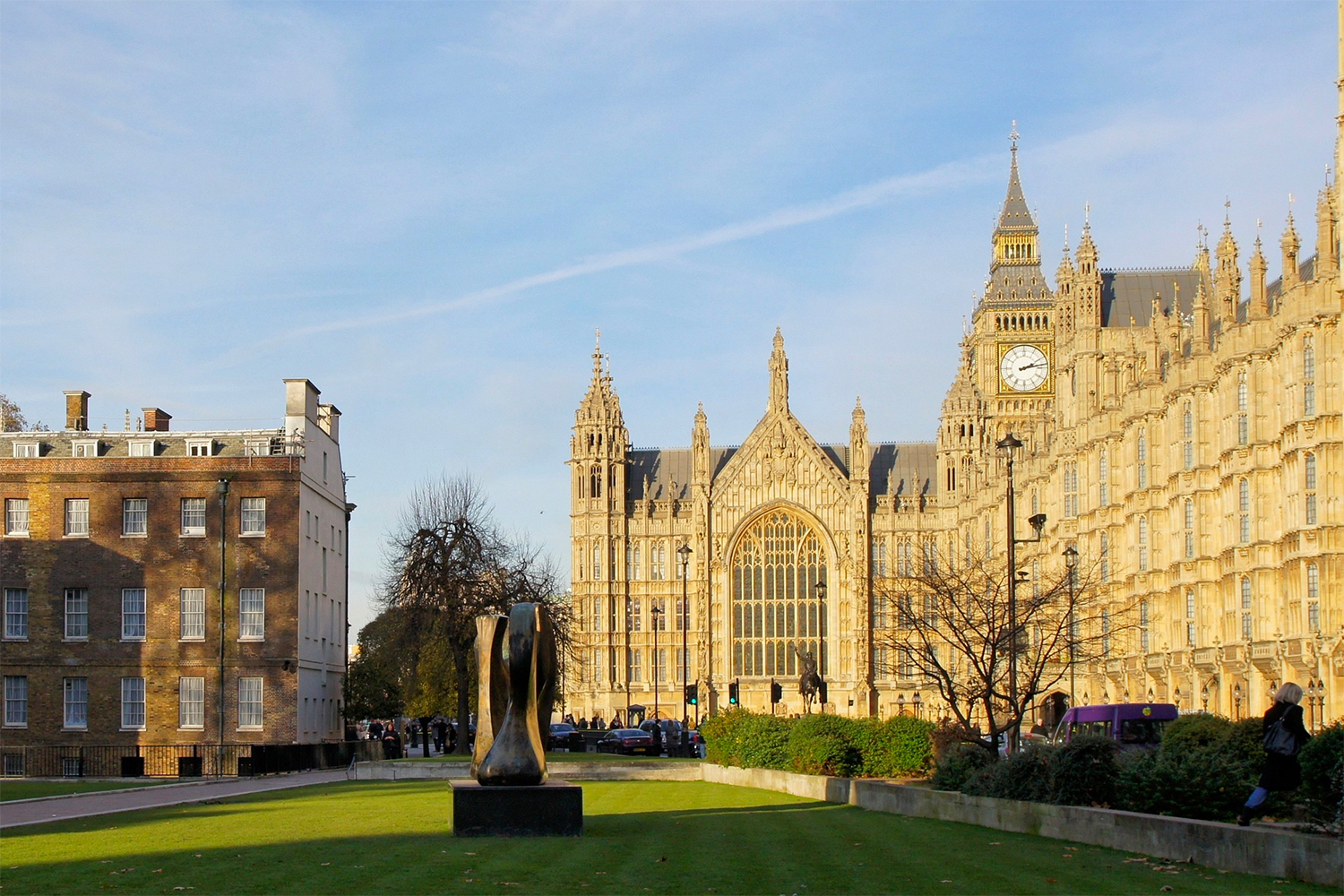

James Benedict Brown
Associate Professor of Architecture
Umeå University
In the title sequence of Patrick McGoohan’s enigmatic sci-fi television series The Prisoner (1967), an unnamed British secret agent drives his Lotus 7 into an underground car park adjacent to the Palace of Westminster in London. He storms into an office and delivers his resignation, prompting his abduction and interrogation by increasingly bizarre means.
The two-storey car park lies beneath Abingdon Street Gardens, also known as College Green. Designed by Eric Bedford (1909-2001), architect of the BT Tower (1961-64), Abingdon Street Gardens was created after German bombing in World War II damaged the eighteenth-century terraces of houses on Abingdon Street and College Mews. Abingdon Street Gardens are part of the Parliamentary Estate and open to the public except in times of heightened political activity, when they are closed to provide television and radio broadcasters space for outside broadcasts with a visual backdrop of the Palace of Westminster.
There are strict rules governing media activities inside Charles Barry and Augustus Pugin’s gothic revivalist Palace of Westminster (1840–76). 2 Television cameras were only installed in the House of Commons in 1989, and only accredited reporters can conduct interviews in designated interior spaces of the Palace. To facilitate broader media access to conduct interviews with Peers and Members of Parliament, interviews by a wider range of journalists and outlets take place in the park. During periods of intense media interest, temporary planning permission is sought for the erection of temporary structures, tents and gazebos in the park.
In the last decade, the park has witnessed an ever-increasing number of days of media occupation per annum, covering four General Elections, 12 budgets, and referenda on Scotland’s membership of the United Kingdom and the United Kingdom’s membership of the European Union. Media use of Abingdon Street Gardens has become so extensive that, in 2020, an application was made to Westminster City Council to redesign the southern perimeter of the park to facilitate periods of closure. Public protests for and against the outcome of the EU Referendum have caused Parliament, City of London Police and broadcasters to change the ways in which they use Abingdon Gardens. With the intensification of public interest in the referendum on the United Kingdom’s membership of the European Union, more substantial fencing was construction and Police protection of the Abingdon Street Gardens media village has been heightened. Within the densely populated temporary city of television and radio studios, modular Heras fencing is also constructed to protect the park’s only public art work, Knife Edge by Henry Moore, 1962-65.
Installed in the same year that Patrick McGoohan’s character drove into the Abingdon Street car park, Knife Edge represents a turning point in Moore’s practice. It is one of his earliest abstract works in two pieces, marking a shift from the exploration of the human figure to abstract forms. Donated to the City of London, precise ownership and responsibility for the upkeep of Knife Edge was unknown for many years. This paper uses the complex histories of Knife Edge, Abingdon Street Gardens and the representation of the Palace of Westminster in the media to build upon recent studies into the architecture of television and speculate about the relationship between British democracy and the representation of public discourse.